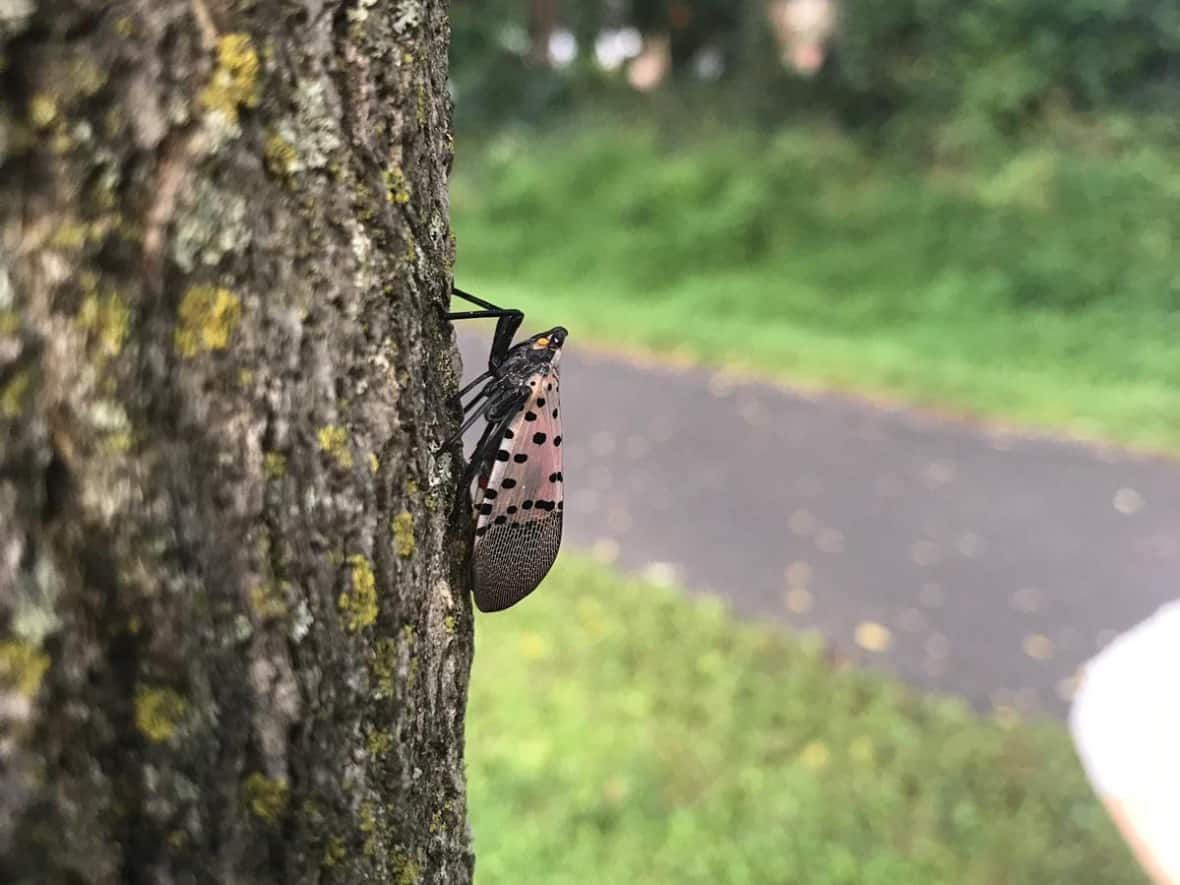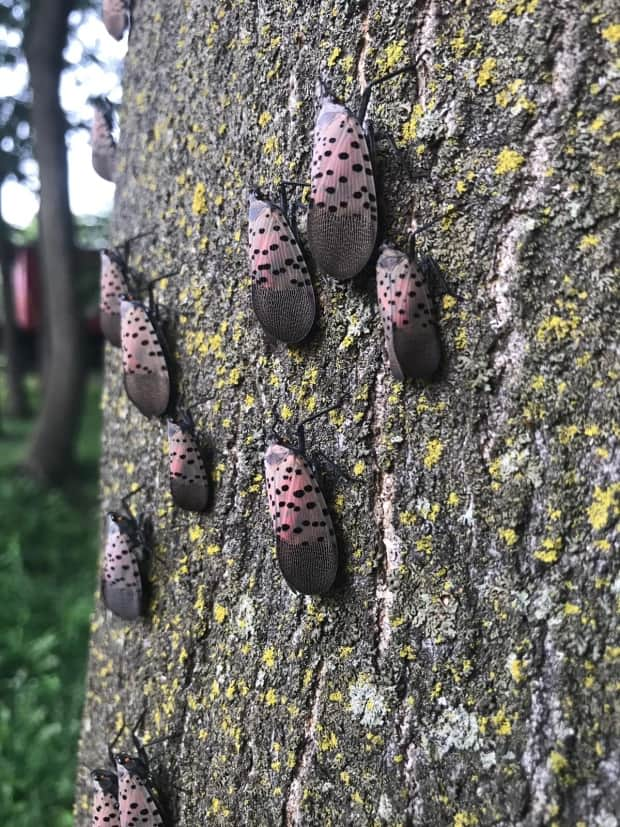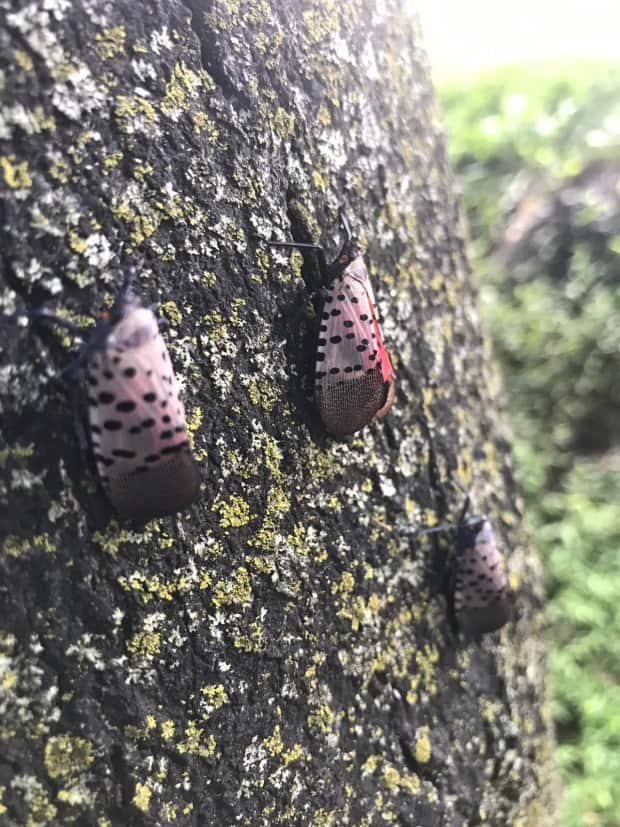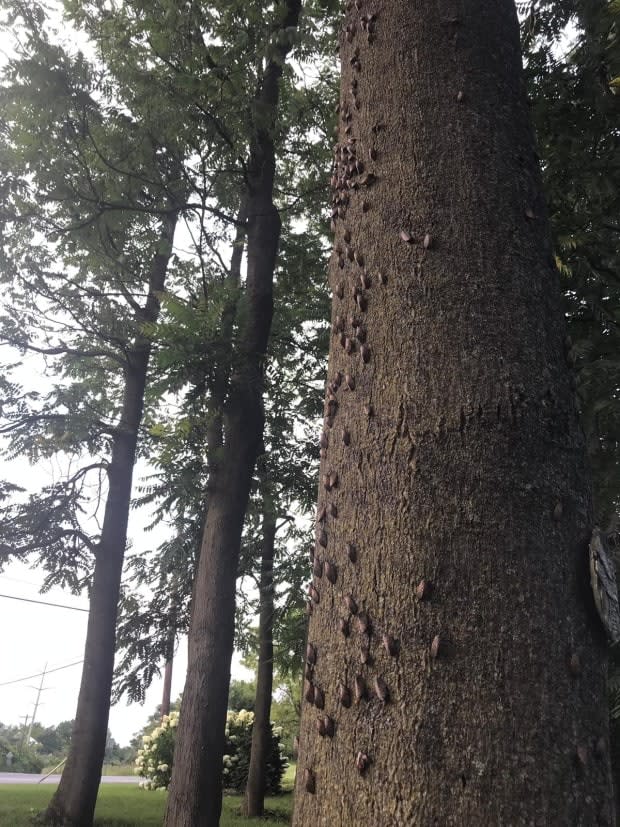An invasive species threatens Ontario's wine and grape industry. Here's what you should know

An invasive insect species has the potential to do millions of dollars of damage to Ontario's wine and grape-growing industry, experts say.
The spotted lanternfly was recently detected in New York state, not far from the Niagara wine-growing region.
There is cause for concern, and this insect "really likes to feed on grape vines," said Emily Posteraro, a program development coordinator at Invasive Species Centre, a Canadian non-profit.
"It's caused a lot of destruction to grape vines and other tender fruit trees and other types of plants in the United States."
The spotted lanternfly is "an invasive plant-hopper native to Southeast Asia," according to the Invasive Species Centre's website. The insect was first detected in North America in Pennsylvania in 2014 and has spread to a number of other states since. It has yet to be detected in Canada, but industry experts say it's only a matter of time before it crosses the border.

It's a "hurry up and wait" situation, Debbie Zimmerman, CEO of Grape Growers of Ontario, told CBC Toronto.
"We know it's invading northern New York state and eventually will make its way to Canada," she said.
The spotted lanternfly sucks the sap out of grape vines, causing them to collapse, Zimmerman said.
She said she's concerned because if left unchecked, the insects could devastate entire vineyards, which would each cost upwards of $45,000 to replant.
"It's a much more aggressive pest than we've seen in the past," she said.
In fact, the species has done millions of dollars worth of damage in Pennsylvania.
Millions of dollars of damage
A 2019 study from Pennsylvania State University estimated the annual economic statewide damage caused by the insect to be between $43 million US and $99 million US, based on data from the 2017 US Census of Agriculture and a survey of crop production experts.
The researchers stated grape growers were hit especially hard but the figures also include nursery operators and Christmas tree growers.

Early detection is key to mitigating the damage, Posteraro said. That's why she and other experts are spreading the word, with hope that Ontarians can keep an eye out for the insects.
"It's easier to get it under control, and it's also a lot less expensive at the prevention stage," she said. "Once you're at the management stage … it's proven to be very difficult to control and eradicate.
The spotted lanternfly can be found in its three life stages.
The Invasive Species Centre describes its eggs as "brown, seed-like, covered in a grey, mud-coloured secretion." They are found grouped together in a vertical formation, usually found on trees, but can be laid on any surface, including cars.
The nymphs grow in four stages, starting out with black and white spots. As they mature they gain red spots with distinctive patches of black and white.
Adults have wings that are approximately one inch long. They have black and grey spots, but appear bright red when the wings are open.
The insects are most often found on or near the Tree of Heaven, a common plant that is also invasive to this region.

If spotted, Posteraro says to take photos, note the location, and report the sighting to the Canadian Food Inspection Agency.
Zimmerman suggests a more extreme approach.
"Just step on it," she said. "Because that's the only way you can stop it."
Liette Vasseur, a professor of biological sciences at Brock University, said this impending invasion is an example of a larger problem linked to climate change.
A longer growing season and more temperate winters caused by rising temperatures allow more invasive species to spread into the region and to live longer.
This is an increasing problem for all crop growers, Vasseur said.
If a species can survive here, it can reproduce here, and if it can reproduce here, it can eventually establish a population, she explained.
"We know that we have a few more species of leaf-hoppers … that come over time because the distribution of species is going north because it's warmer," Vassueur said. "That's the big challenge that we have to face."
"We have new species that we didn't have before."
The Ontario Ministry of Agriculture, Food and Rural Affairs said in a statement to CBC Toronto it is currently surveying for spotted lanternflies in high-risk areas to assist with early detection.

 Yahoo Movies
Yahoo Movies 
